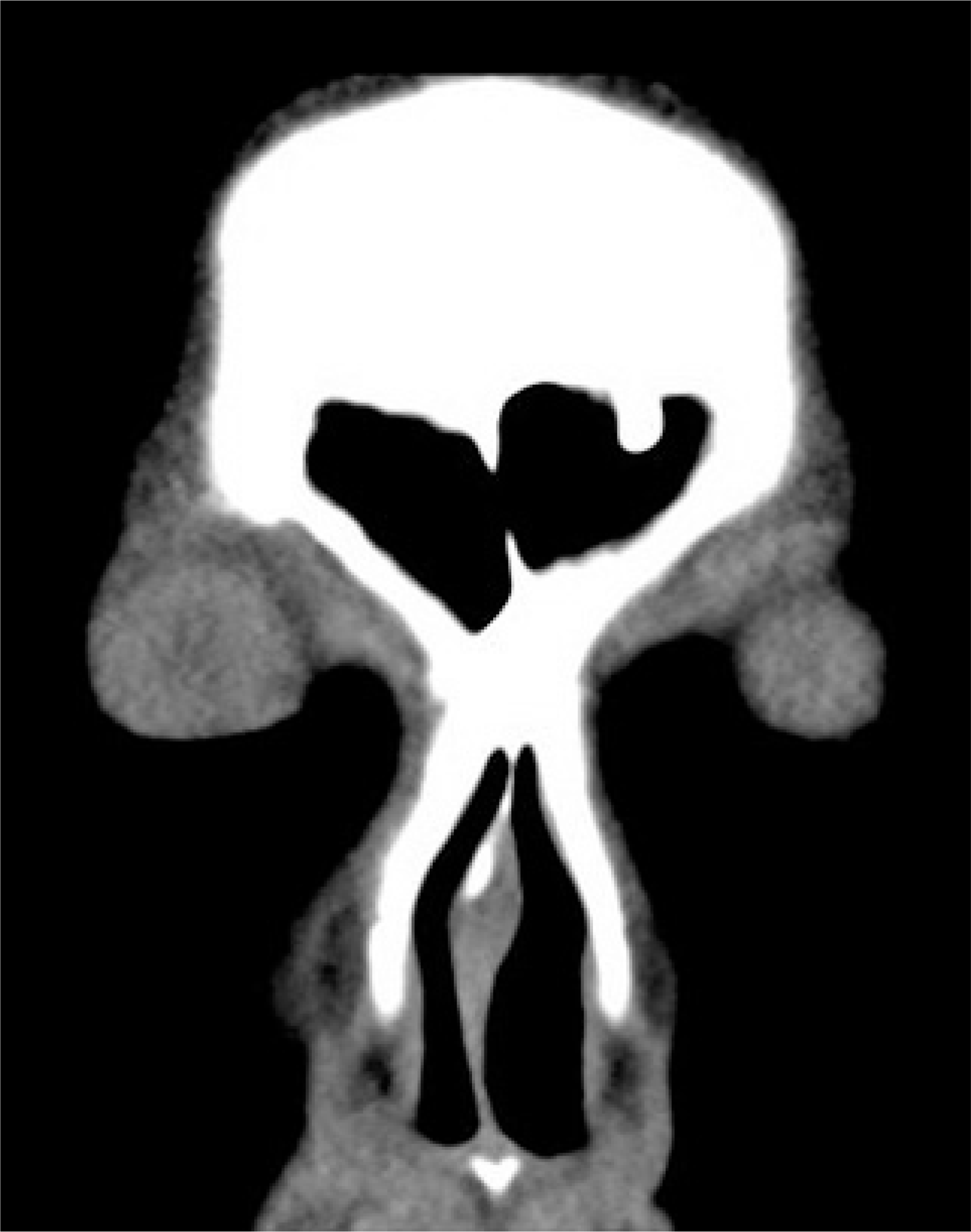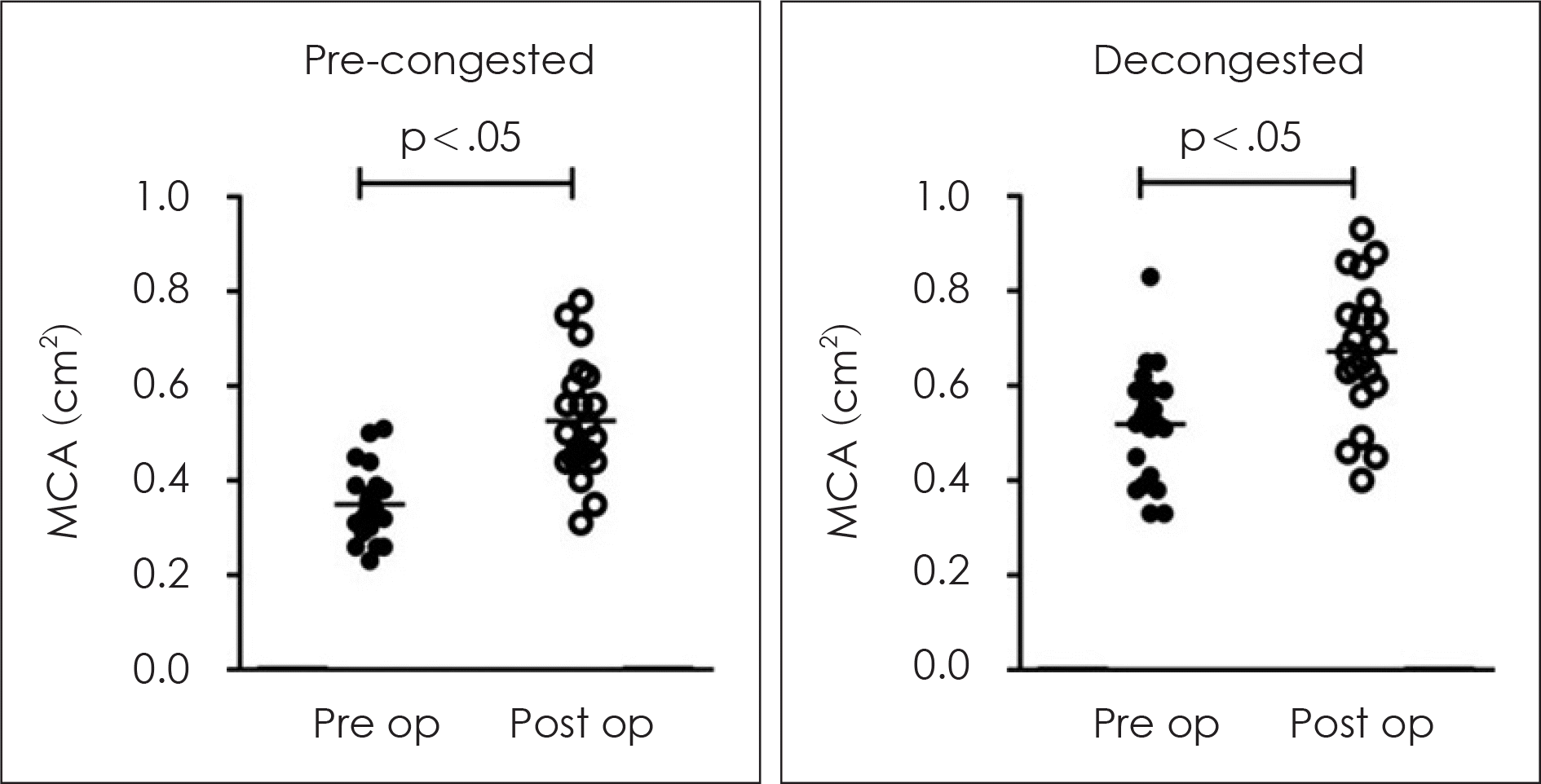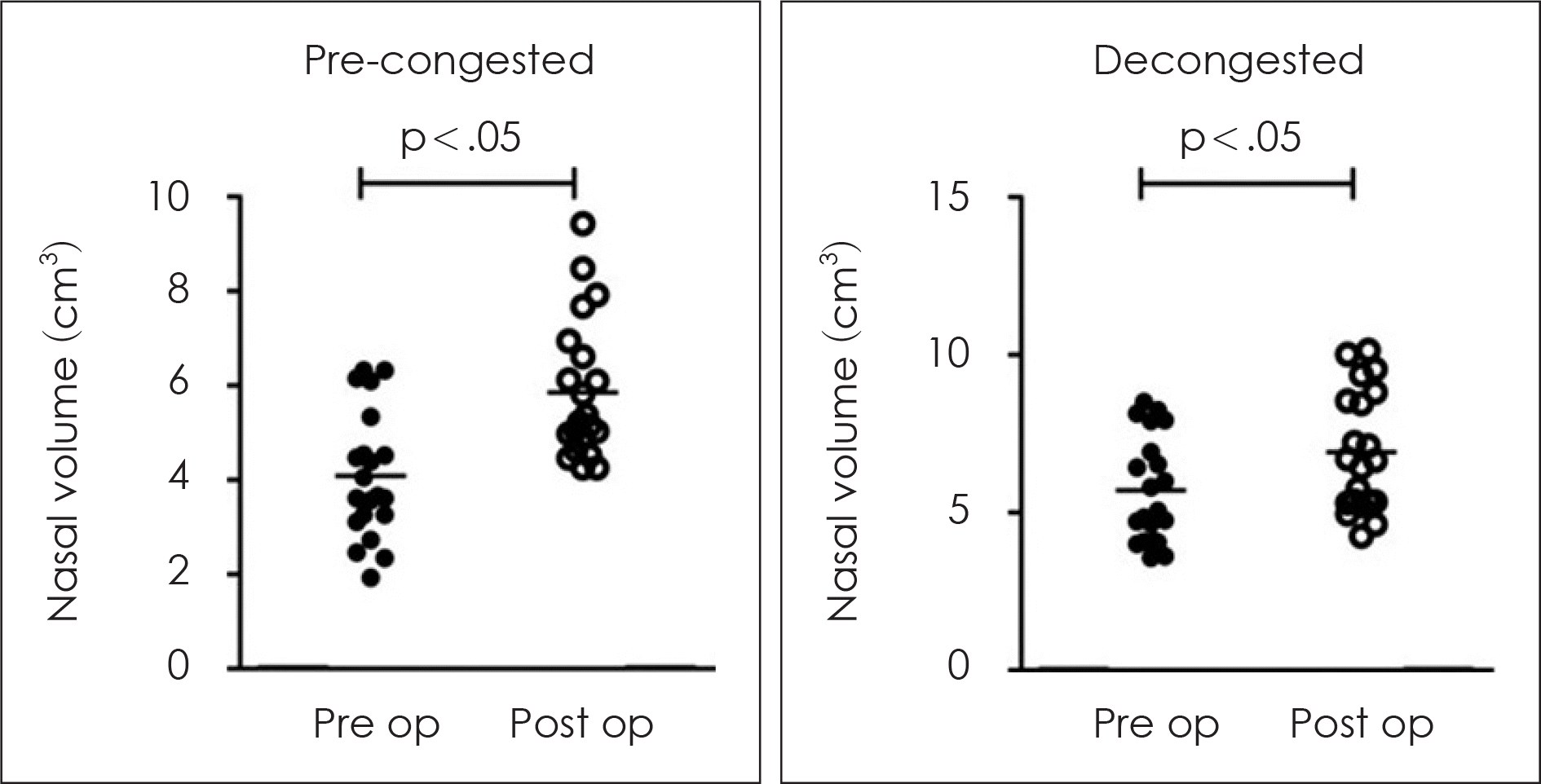Abstract
Background and Objectives
High dorsal deflection of the nasal septum around cartilage or the perpendicular plate is technically difficult to correct. The objective of this study was to assess whether correction of high septal deviation during septoplasty is necessary to improve nasal airflow.
Patients and Surgical Method
Twenty-one patients with high septal deviation around the septal cartilage or the perpendicular plate were included in this study. In order to improve nasal obstruction, septoturbinoplasty was performed, but high septal deviation was not corrected. Subjective and objective improvements were evaluated using the visual analogue scale and acoustic rhinometry 1 month before and 3 months after surgery.
Results
After correction of nasal septum deviation except high septal deviation and reduction of turbinate mucosal volume, postoperative nasal volume and minimum cross-sectional area were significantly increased. Subjective symptom scales for nasal obstruction, rhinorrhea, sneezing, and posterior nasal drip were considerably improved after limited septoturbinoplasty in patients who still had high dorsal deflection of the nasal septum.
Go to : 
References
1). Min YG, Jung HW, Kim CS. Prevalence study of nasal septal deformities in Korea: results of a nationwide survey. Rhinology. 1995; 33(2):61–5.
2). Baumann I, Baumann H. A new classification of septal deviations. Rhinology. 2007; 45(3):220–3.
3). Kim IJ, Rha KS, Park CI. Changes in the geometry of the nasal cavity with nasal cycle: evaluation by acoustic rhinometry. Korean J Otolaryngol-Head Neck Surg. 1995; 38(5):705–10.
4). Grymer LF, Hilberg O, Elbrønd O, Pedersen OF. Acoustic rhinometry: evaluation of the nasal cavity with septal deviations, before and after septoplasty. Laryngoscope. 1989; 99(11):1180–7.
5). Grymer LF, Hilberg O, Pedersen OF, Rasmussen TR. Acoustic rhinometry: values from adults with subjective normal nasal patency. Rhinology. 1991; 29(1):35–47.
6). Courtiss EH, Goldwyn RM, O'Brien JJ. Resection of obstructing inferior nasal turbinates. Plast Reconstr Surg. 1978; 62(2):249–57.

7). Arbour P, Kern EB. Paradoxical nasal obstruction. Can J Otolaryngol. 1975; 4(2):333–8.
8). Murakami WT, Wong LW, Davidson TM. Application of the biomechanical behavior of cartilage to nasal septoplastic surgery. Laryngoscope. 1982; 92(3):300–9.
9). Chang CW, Ries WR. Surgical treatment of the inferior turbinate: new techniques. Curr Opin Otolaryngol Head Neck Surg. 2004; 12(1):53–7.

10). Friedman M, Tanyeri H, Lim J, Landsberg R, Caldarelli D. A safe, alternative technique for inferior turbinate reduction. Laryngoscope. 1999; 109(11):1834–7.

11). Sapçi T, Sahin B, Karavus A, Akbulut UG. Comparison of the effects of radiofrequency tissue ablation, CO2 laser ablation, and partial turbinectomy applications on nasal mucociliary functions. Laryngoscope. 2003; 113(3):514–9.
Go to : 
 | Fig. 1.A coronal view of paranasal sinus computed tomography for high septal deviation: Baumann's type II. |
 | Fig. 2.Comparison of pre-operative and post-operative MCA of patients with high septal deviation at second notch of concave nasal cavity. MCA: minimal cross sectional area. |
 | Fig. 3.Comparison of pre-operative and post-operative nasal volume of patients with high septal deviation. |
 | Fig. 4.Comparison of pre-operative and post-operative visual analogue scales for subjective symptoms. |
 | Fig. 5.A: Comparison of pre-operative and post-operative MCA at second notch of concave nasal cavity in patients without high septal deviation. B: Comparison of pre-operative and post-operative nasal volume in patients without high septal deviation. MCA: minimal cross sectional area. |
Table 1.
Characcteristics of the patients




 PDF
PDF ePub
ePub Citation
Citation Print
Print


 XML Download
XML Download